

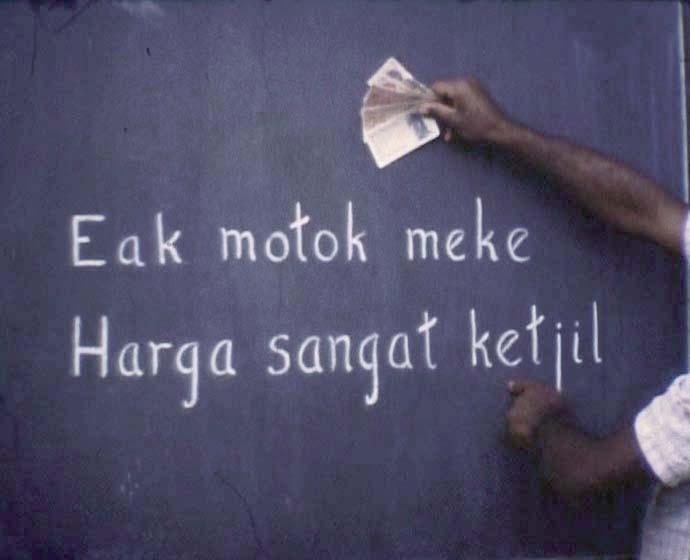



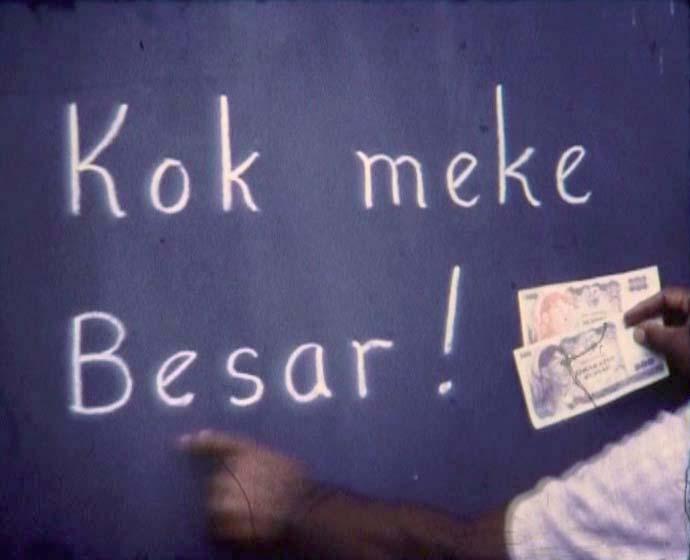

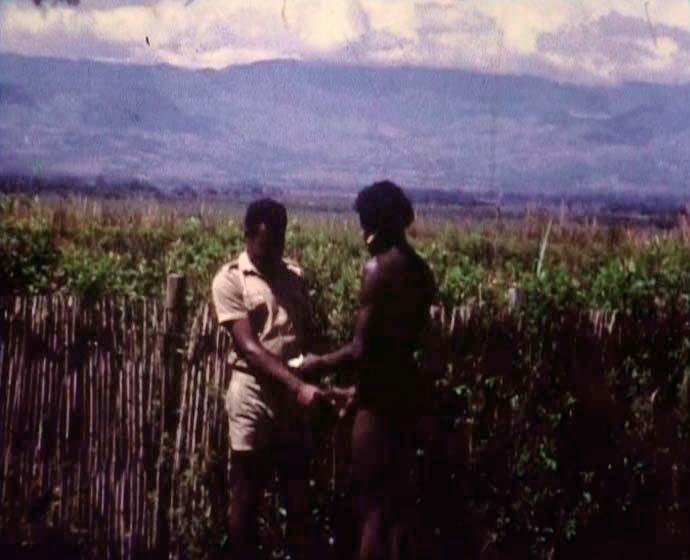

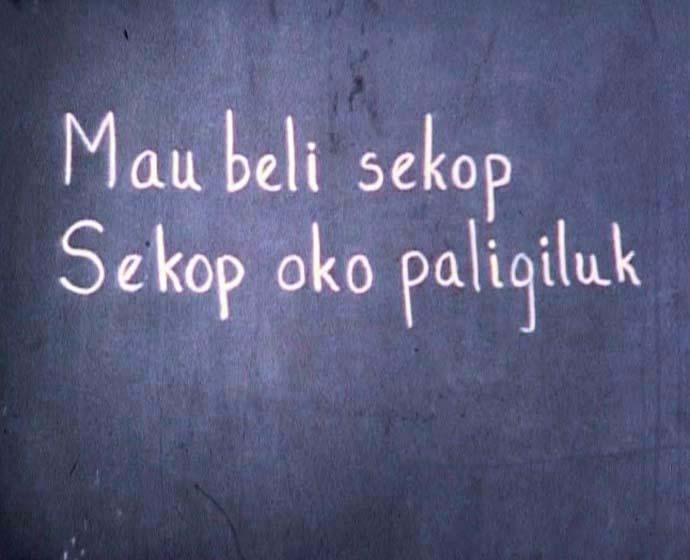

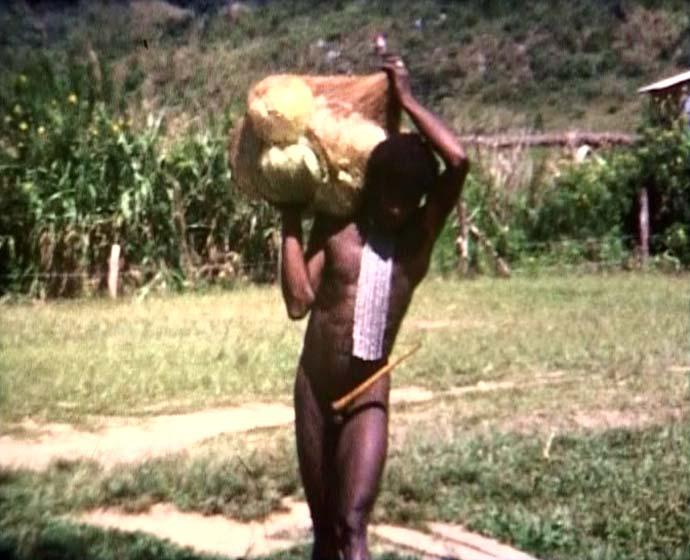

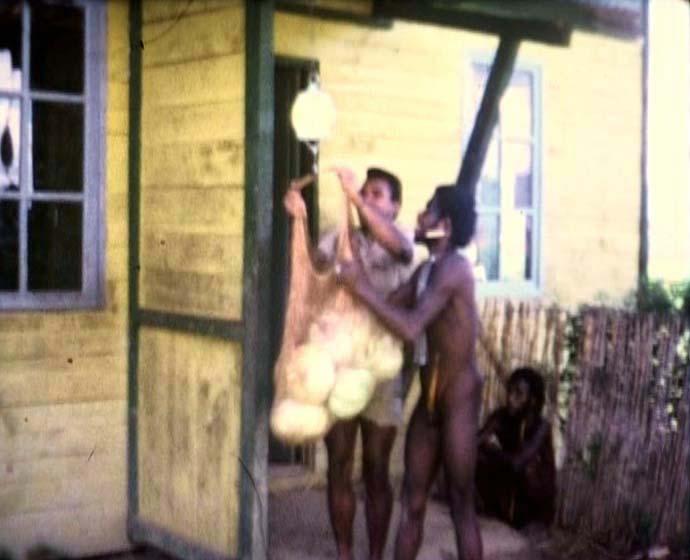

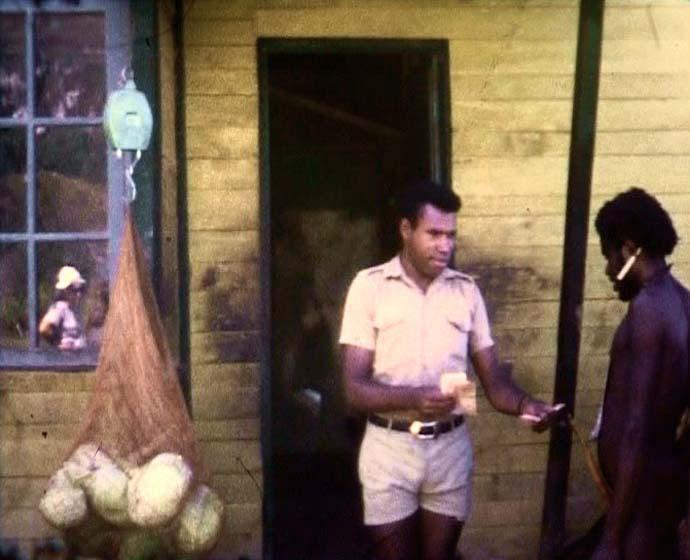





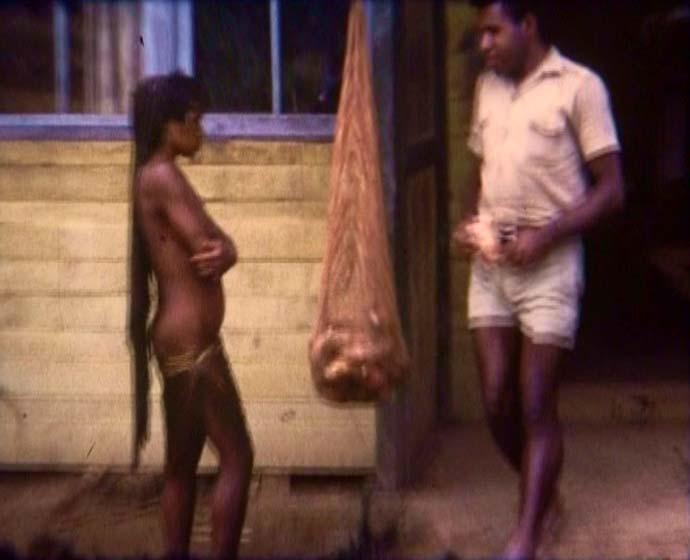

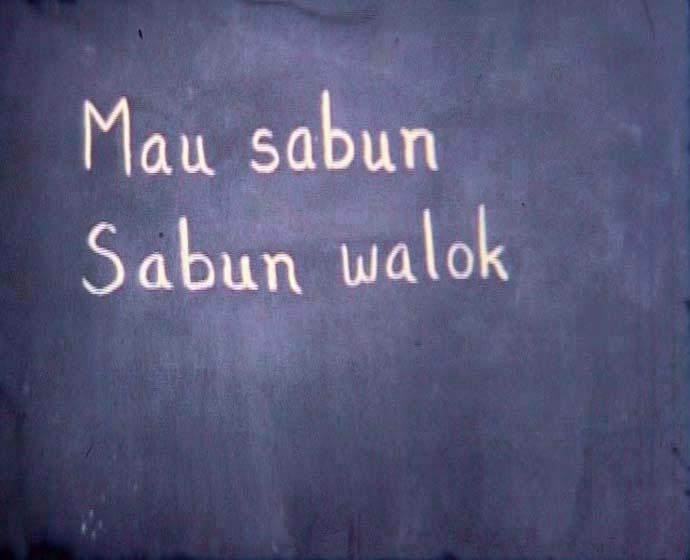

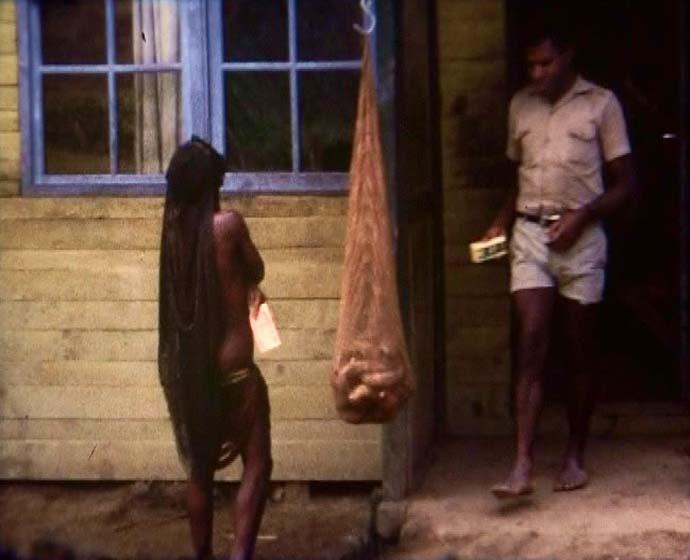



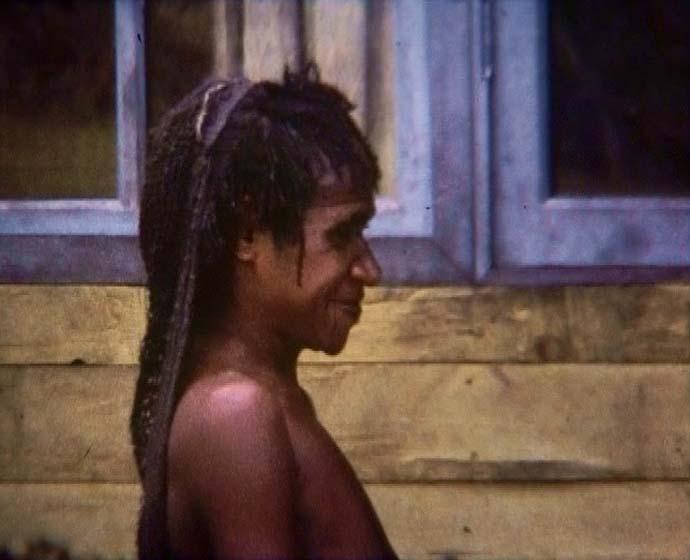

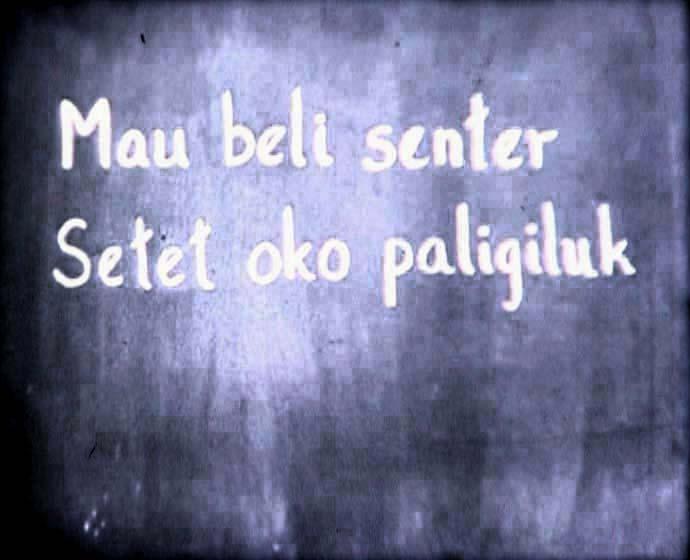

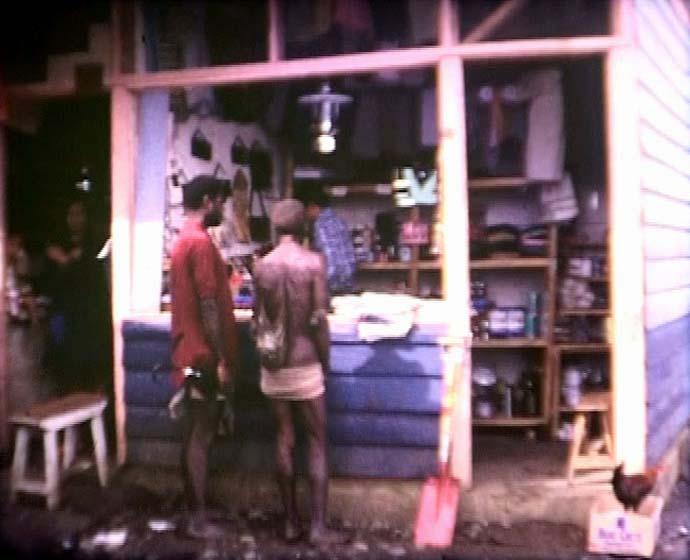

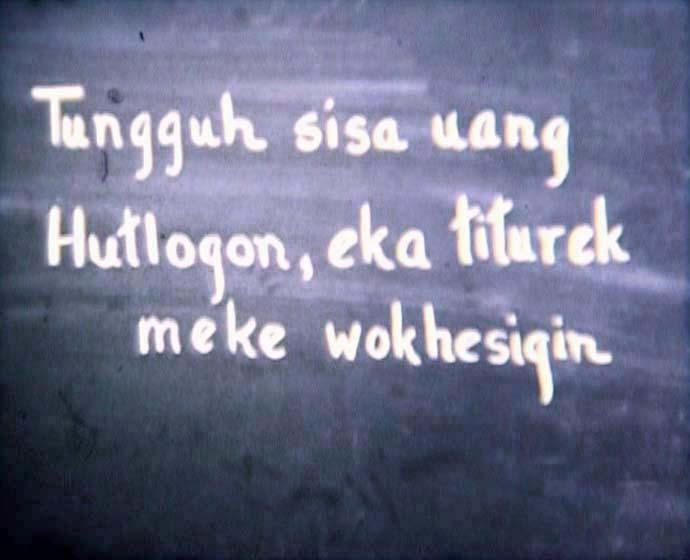

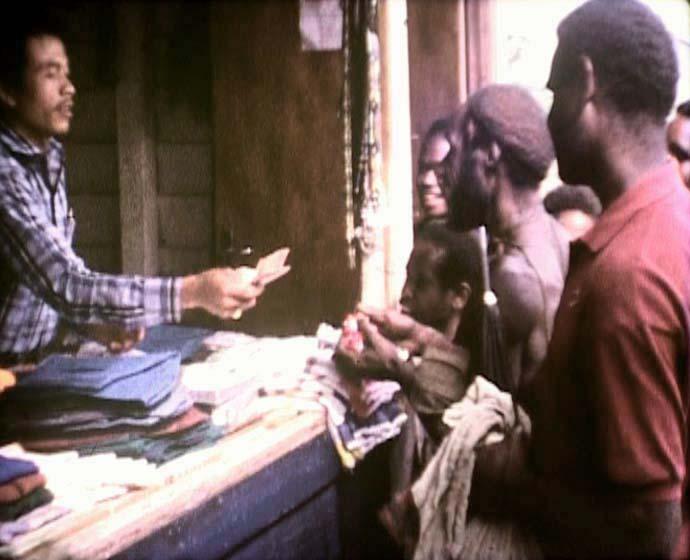

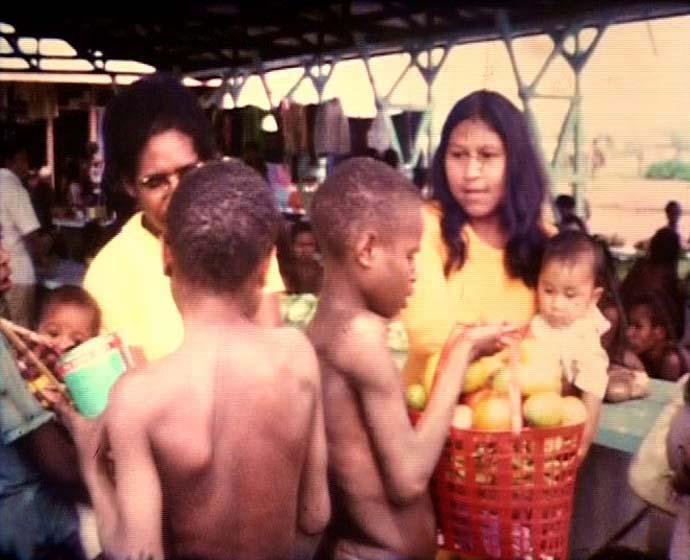

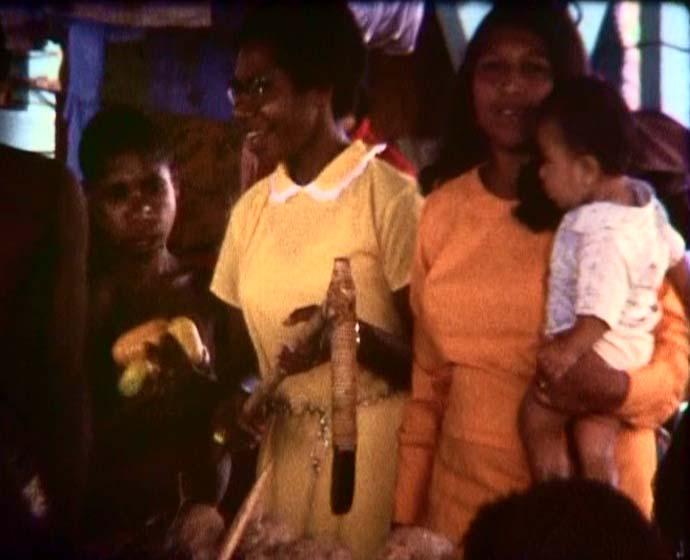

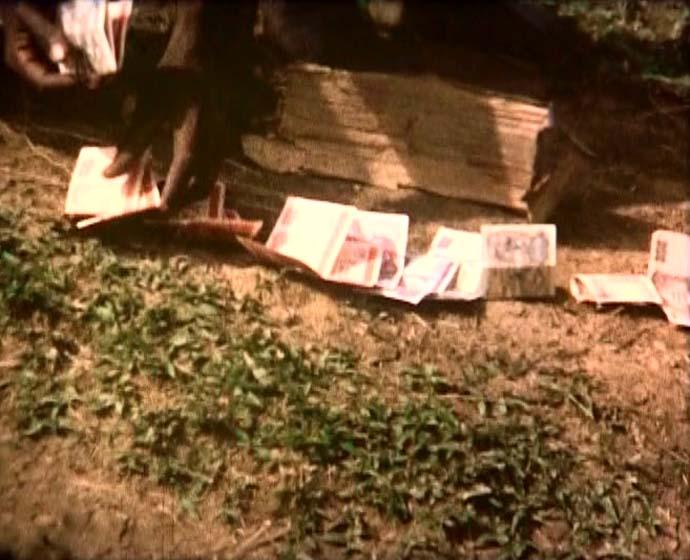



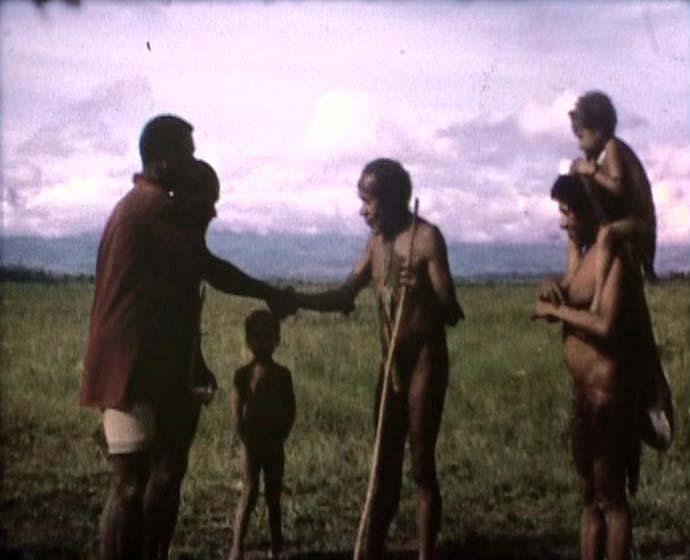

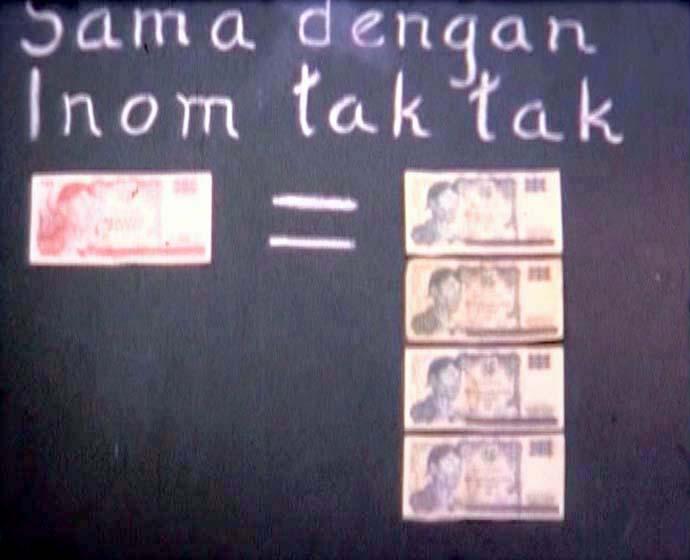

Uang Eka
Objectcode
FI/40/30
Film by father Jules Camps OFM, recorded in the 1970s in his working area in the highlands of Irian Jaya. Educational film about the value and use of new money. In 1972 the special currency for West Irian was replaced by the national Indonesian currency. After the presentaion of various banknotes, examples of their use follow, and at the end some explanation of the value of the bills.
Contents
Film : Super-8, Kodachrome II, Colour Length : 84 meters Running Time : approx. 25 minutes Film Date : January - March 1972 Place : Yiwika and Wamena, Baliem Valley, West Irian, Indonesia Filmed by : J.A.E. Camps ofm. Description : Uang Eka is an experimental film using Super-8 film. This educational film concerns the use of a new money, only recently introduced by the Indonesian Government into the Baliem Valley, West Irian. The script was prepared by Sharon L. Naylor, in collaboration with Father Jules Camps ofm, the missionary stationed at Yiwika. Larry L. Naylor, Research Anthropologist for the United Nations Development Programme, Fundwi, and Southern Illinois University, provided technical and cultural advice. In the early part of 1972, the Indonesian Government ended the use of West Irian Rupiah, a special money used only in West Irian since the territory was acquired from the Dutch, and introduced the National Indonesian Rupiah. The people of the Baliem did not possess a traditional money, and the short period of contact has not lead to any real understanding of money and its uses, except among the children who have acquired some education. The bulk of the people remain quite ignorant about money, using only the colours of the previous currency as a guide to buying and selling goods. The introduction of new money, in more varieties and in conflicting colour to the old currency, has caused a great deal of difficulty among these people and also led to wide spread losses. The idea of the film was conceived as a possible means of educating the people about this new money, especially its uses and values. The people have been exposed to films by the mission and they have been well received. The school children often giving a running commentary to those unable to read. Super-8 was considered the most economical film and therefore chosen as the medium in which this educational film experiment would be tried. The persons and situations used in the film are taken from real life and involves the use of local residents with only minimum amounts of direction. The situations and money shown in the film are explained in subtitles, both in Indonesian and Baliem languages. It is titled using local materials and the characters seen are also listed. The film begins with an educational lesson on the value of, and the kinds of rupiah to be found in use. Each is identified by picture and subtitle. The situations involving the use of money, based on local reality, make up the bulk of the film. The scenes include a man, desiring to buy a shovel and having to sell cabbage to obtain sufficient money. A woman sells potatoes to purchase soap for washing. A man desires a bush knife and must sell vegetables (tomatoes) to obtain it. The use of money in the stores located in the government centre at Wamena is also shown. A segment on getting change is included as is the selling of vegetables in that market. The last scene is of Kurelu taking an assortment of money and trade items off to trade for pigs. The final portion of the film is again concerned with the new money and its value. Although this film is not without problems, the preliminary results indicate that it is being well received and indeed helping the Baliem people into the world of moneyed economics. Description prepared by Larry L. Naylor, Southern Illinois University.
Title
Camps 14
Year
1972
Technical detail
Film type
Amateur movie
Dating
jan.-mrt. 1972
Color
Silent
Indonesian
Thesaurus terms
Cultural
Cultural origin » Papua » Central Highlands » Centrale Highlands » Baliem Valley
Geographic
Geographical term » Papua » Division Hollandia » Explorationressort Eastern Highlands » Baliem
Copyrighthouder(s)
Minderbroeders Franciscanen